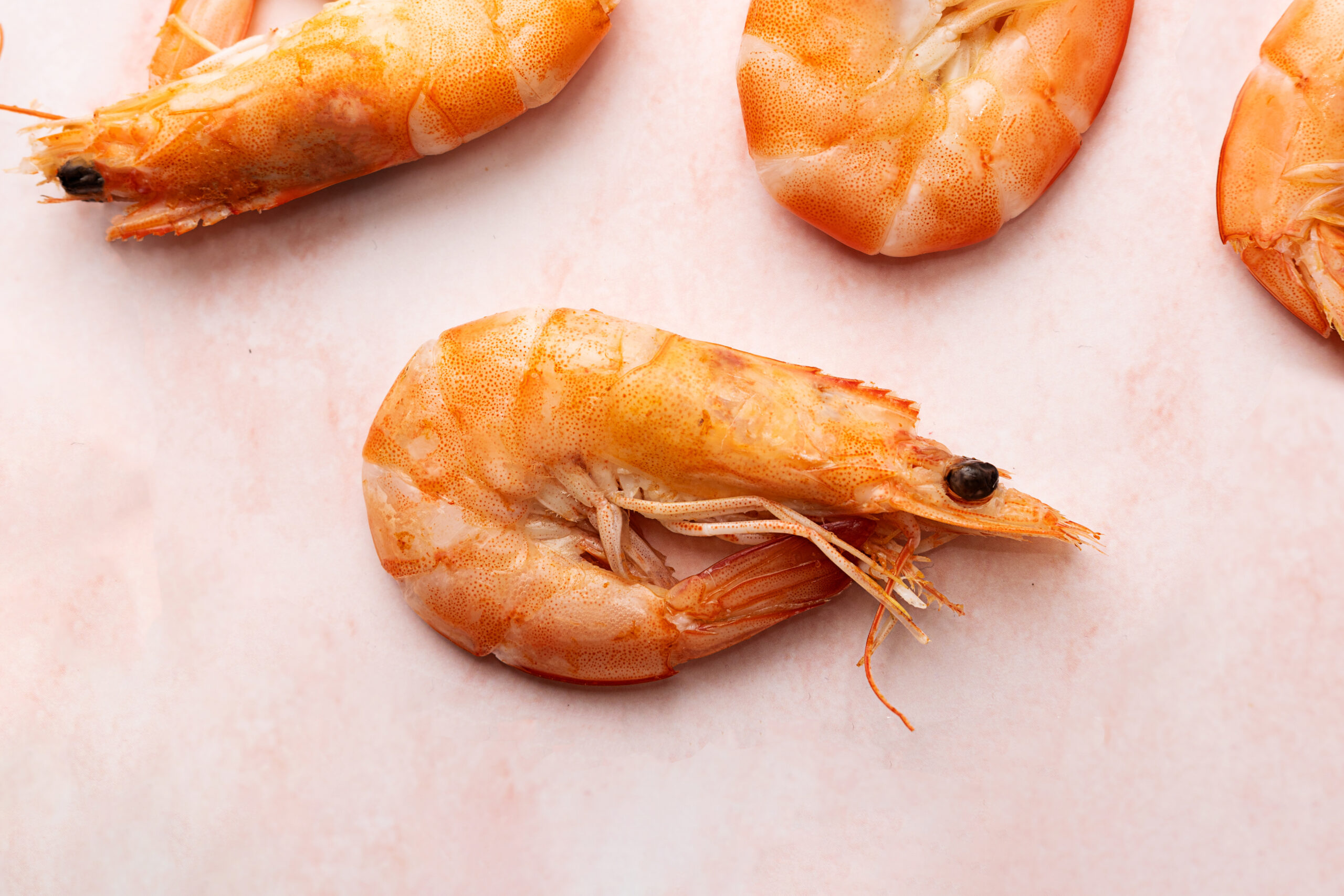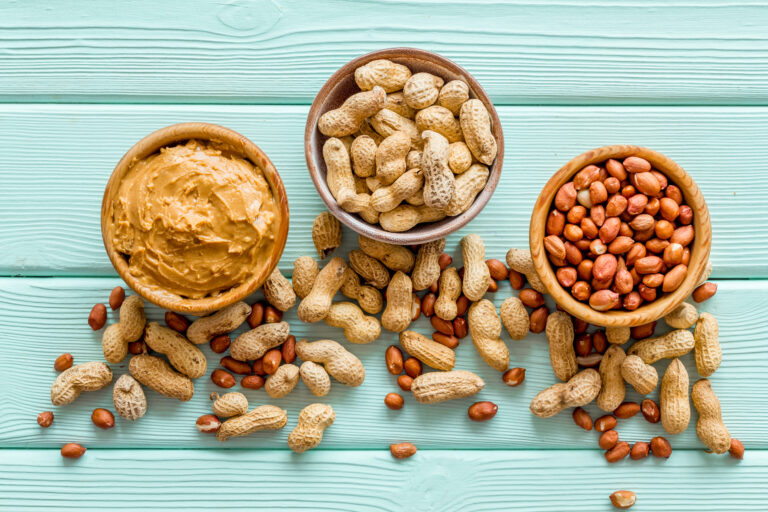Shellfish Allergy – Everything you need to know
This post may contain affiliate links. Read our disclosure policy.
The content provided on FoodAllergiesLiving.com is for educational purposes only. The information supplied on this website is not intended to diagnose, treat, cure, or prevent any disease, nor is it intended to replace the advice of a physician.
Were you or your child recently diagnosed with a shellfish allergy? If so, I can understand if you’re feeling anxious, confused, or maybe a little overwhelmed. You might be wondering what you or your child can and cannot eat. What symptoms to look for, or maybe if your child will have to live with this allergy their entire life.
If that sounds like you, keep reading. Below I’m sharing Everything You Need To Know About Shellfish Allergy. I’ll give you an overview of what it is, symptoms and reactions to be aware of, ingredients to look for, and even ideas for managing allergies at home.

What Is A Shellfish Allergy?
According to foodallergy.org, “Shellfish allergies are the most common food allergies in adults and among the most common food allergies in children. Approximately 2% of the U.S. population reports an allergy to shellfish. Shellfish allergies are usually lifelong.
When a person with an allergy to a particular shellfish is exposed to that shellfish, proteins in the shellfish bind to specific IgE antibodies made by the person’s immune system, this triggers the person’s immune defenses, leading to reaction symptoms that can be mild or very severe.
There are two groups of shellfish:
- Crustaceans, such as shrimp, prawns, crab, and lobster.
- Mollusks/bivalves, such as clams, mussels, oysters, scallops, octopus, squid, abalone, and snail.
Allergy to crustaceans is more common than allergy to mollusks, with shrimp being the most common shellfish allergen for both children and adults.
Signs and Symptoms Of A Shellfish Allergy
Shellfish allergy reactions can range from mild to potentially life-threatening. Even if you have a mild reaction one time, allergies are unpredictable, and the next time it could be severe. Once diagnosed, most doctors will provide you with an EpiPen, which should be carried with you at all times to prevent a fatal reaction.
Here are some signs and symptoms you should look for:
- Hives or rash
- Itchiness of the skin
- Watery or swollen eyes
- Wheezing
- Trouble breathing
- Abdominal pain
- Vomiting
- Diarrhea
- Throat tightness
- Drop in blood pressure
- Anaphylaxis
Anaphylaxis
Anaphylaxis is a severe and potentially life-threatening reaction to shellfish. It can occur anywhere from seconds to minutes after you’ve been exposed to an allergen trigger and should be treated immediately.
If you notice someone experiencing anaphylaxis, injectable epinephrine (EpiPen) should be administered immediately, along with a trip to the emergency room.
Signs of anaphylaxis you should look for are:
- Swollen throat or constriction of airways
- Coughing, choking, or trouble breathing
- Severe drop in blood pressure and weak pulse
- Nausea, vomiting, or diarrhea
- Dizziness or fainting
To know more about this severe allergic reaction, check out my post about What Is Anaphylaxis and How Is Treated.
Types of Shellfish
According to research, there are two types of shellfish that people can be allergic to. Some people are only allergic to one or the other, while some are allergic to both.
The two groups are:
- Crustaceans: Such as shrimp, prawns, crab, and lobster
- Mollusks: Such as clams, mussels, oysters, scallops, octopus, squid, abalone, and snail
Shellfish Allergy Treatment
Strict avoidance of shellfish is recommended to prevent a reaction. Unfortunately, there is no treatment right now that cures food allergies. Researchers are now studying ways to go beyond today’s methods of treating allergies. Hopefully, we may soon have better and new ways to block the body’s allergic response.
Once your doctor has confirmed a shellfish allergy, you will most likely get a prescription for self-injectable epinephrine in case of a severe reaction happens, and an antihistamine for mild reactions.
Managing Shellfish Allergy
As with any allergy, the most effective way to avoid a reaction is by simply not allowing shellfish in the house. If that is not possible, here are a few ideas on how to safely manage allergies at home:
- Use designated counter space to prepare the person with food allergies, so there’s no cross-contamination.
- Cook with separate kitchen utensils.
- Use color-coded containers, so the person with allergies knows what food is safe and what is off limits.
These are just a few ideas to start with, I have a lot more in my post about “Keeping An Allergy Friendly Kitchen.”
Also, be super careful when eating out, always read labels, and keep your emergency kit close.
Common Foods That Contain Shellfish
In order to prevent a possible allergy attack, it’s important to avoid exposure to any food or places that may contain shellfish. You’ll want to pick low-risk restaurants that aren’t serving shellfish, avoid buffets that contain shellfish, and stay away from fish markets where there’s a high chance of cross-contamination.
You’ll also want to read product labels carefully and steer clear from any that contain shellfish or shellfish-byproducts. At this point in the U.S., it is not required to label mollusks, and you should take extra precautions if a product seems “iffy”.
Some ingredients to look for are:
- Abalone
- Barnacle
- Krill
- Clams, such as cherrystone, littleneck, Pismo, and quahog
- Crab
- Crawfish, crayfish (écrevisse), crawdad
- Lobster, langouste, langoustine, scampi, coral, tomalley
- Mollusks
- Mussels
- Squid (calamari)
- Snail (escargot)
- Oysters
- Octopus
- Scallops
- Shrimp, prawns, crevette
Common foods commonly contain shellfish are:
- Bouillabaisse
- Cuttlefish ink
- Fish stock or fish sauce
- Seafood flavoring
- Sushi
- Glucosamine
- Surimi
Will My Child Outgrow Their Shellfish Allergy
According to research, about one-third of children and adults diagnosed with a shellfish allergy outgrow them. But, like peanuts, tree nuts, and fish, most shellfish allergies are life-long.
Shellfish Allergy and Iodine
Sometimes a shellfish allergy is confused with an iodine allergy because shellfish are known to contain trace amounts of iodine. However, their protein structure is different, so the iodine in shellfish is not causing your reactions.
If you have a shellfish allergy, you don’t have to worry about having a reaction to iodine.
Frequently Asked Questions
People with shellfish allergies are most commonly allergic to those found in the crustacean family. Shrimp, crab, and lobster cause the most reactions.
Shellfish allergies are actually most commonly associated with adult-onset food allergies. Besides a fish allergy, shellfish is the second most common allergy found in adults. In many cases, someone can have an allergic reaction to a food they’ve previously eaten without a problem because allergies can appear at any point in someone’s life.
Shellfish can be found in some products like bouillabaisse, cuttlefish ink, fish stock, sushi, or anything that contains seafood flavoring. It’s always important to read labels carefully to prevent accidental exposure.
No, you can’t! Octopus is a shellfish, and you need to avoid it.
Yes, as with any other food allergy, shellfish allergy is a serious disease that can be life-threatening.
You cannot eat oyster sauce if you have a shellfish allergy because the primary ingredient of oyster sauce is oysters.
While a shellfish allergy may feel hard to handle at first, there truly is no reason to worry. You may be feeling confused, lost, or overwhelmed, but if you look in the right spots, there can be so much support.
Living with a food allergy is totally manageable! Yes, it requires attention to detail, planning, and vigilance. It also means that certain foods must come out of your diet. But it does not mean that life as you know it will end. With some simple safety steps, you can still eat out, travel, go to parties, send your child to school or on play dates, and live a normal life.
I suggest that you join a Facebook group, find a blog, or listen to podcasts in order to find information and support. Like every allergy, a shellfish allergy is not an easy diagnosis to live with, especially because of life-threatening reactions, but I have faith that you will handle it well and will come out stronger.







